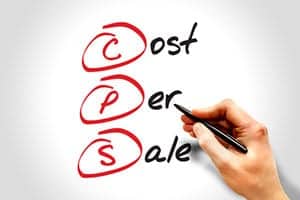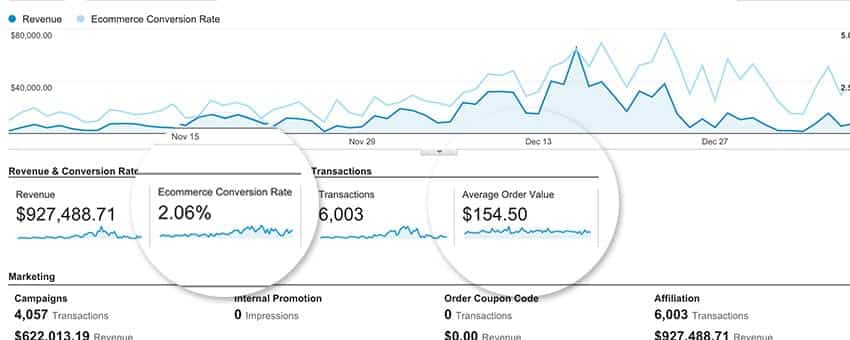The 4 Most Essential Success Metrics for Your E-Commerce Store
In the e-commerce space, business owners that are successful often know exactly why they are successful. They’re successful, for one major reason, because they know how well they are performing– their data always tells the story. Your success in e-commerce is determined by number and hard facts. And while it’s easy to rely on instincts, emotions and reactions, the high performing companies know that the only things that matter are their data-backed metrics of success.
There are tons of metrics from which you can evaluate a business. Many of them don’t matter at all. But, without a doubt, there are some essential metrics that you need to utilize. We’ll discuss them in this post.
- Cost of Acquiring a Customer (CAC)
Definition: The average amount of money that you spend to acquire one customer.

- Conversion Rate (CR)
Definition: The percentage of visitors who make a purchase on your website.

Your conversion rate is definitely one of the most important metrics you can know. Common conversion rates will be 2%-3%. You will want to do better than that average. There are many ways to improve your site’s conversion rate. Here are a few actionable tips:
- Improve your product pages. Use better images and more persuasive descriptions. You can also add videos to your product pages, which is something many stores have done to successfully raise their conversions.
- Improve the user experience of the site. Make sure the navigation is logical. Improve the layout, etc.
- Tighten the checkout process. The checkout is the last stage in the buying process, and it needs to go quickly and smoothly. Lengthy checkouts will sink your conversion rates. Also, check your shopping cart abandonment rate, which is the percentage for every person who exits the checkout page before making the purchase.
As a rule, the higher your conversion rate is, the better your other success metrics will be. When it comes to optimization, the conversion rate needs to be one of the first areas that you look into.
- Average Order Value (AOV)
Definition: The average amount that a customer spends when they make a purchase on your site
This is a metric that you will always want to increase because, in turn, it increases your profits. Getting customers to spend more when they make a purchase can usually be done in two ways:
- Increase prices.
- Enable customers to make more purchases by displaying related or complementary products, immediate upsells, free shipping thresholds, and volume discounts.
Increasing prices can have a negative effect. It would be a wise choice to try option #2.
- Customer Lifetime Value (CLTV)
Definition: The average amount that a customer is worth during their relationship with your business.
We’ve talked about calculating the lifetime value of a customer before. Knowing the average worth of a customer is powerful info.. As a rule, your customer acquisition costs should never be higher than your CLTV. So if it costs $150 to acquire a customer, the CLTV should never be less than that $150. Ideally, it should be much, much more. If you know, for example, that your CLTV is $10,000, you won’t balk at spending $150 to acquire that customer
The best way to increase your CLTV is to encourage repeat purchases. It’s far easier, and much more cost effective, to get a repeat customer than acquire a new one.

- Autoresponder series. Email isn’t going away anytime soon, and for good reason. Use an email series to spark engagement and offer promotions.
- Remarketing ads. Both Facebook and Google have pixels that you can place on your website that will enable ads to be shown to people who have visited your website. While this is a good way to recapture leads who have abandoned your site, it can also be a good way to advertise in front of customers who have already made a purchase.
- Use incentives to increase repeat purchases. The best way to do this is to integrate a rewards program into your site.
In addition to increasing repeat purchases, you need to increase the average order value (AOV), which we talked about above.
Let your data guide you
While you may be inclined to rely on gut-reactions and instincts, real success is measured through data. Use the metrics talked about in this post to take your store to the next level.
Are you ready to discuss your next e-Commerce website project with the leader in e-Commerce development and digital marketing? If so, contact Zen Agency today! We are a group of WooCommerce experts.








